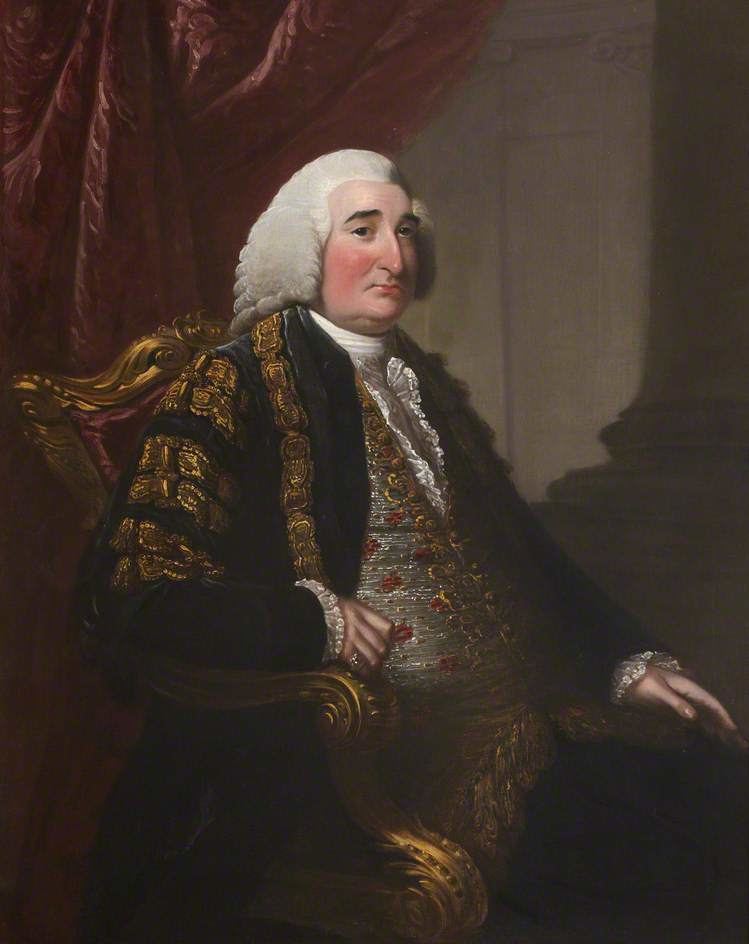Name Thomas 9th Coronation date 1758 | Died December 27, 1787 Deposed date 1787 | |
 | ||
Born 4 July 1710 ( 1710-07-04 ) Spouse(s) Constantia Ernlie (m. 1741) | ||
Thomas Hay, 9th Earl of Kinnoull (4 July 1710 – 27 December 1787), styled Viscount Dupplin from 1719 to 1758, was a Scottish peer, British politician and scholar.
Contents
Family and education
Hay was the eldest son of George Hay, 8th Earl of Kinnoull, and Abigail, daughter of Robert Harley, 1st Earl of Oxford and Earl Mortimer.
He was educated at Westminster School and then at Christ Church, Oxford.
On 12 June 1741, at Oxford Chapel, Marylebone, he married Constantia Ernle, the only daughter and heiress of John Kyrle Ernle of Whetham House, Calne. Her great-grandfather was Sir John Ernle, who served as Chancellor of the Exchequer between 1676 and 1689.
They had a son, born 12 August 1742, who died 14 October 1743. She died in July 1753, and was buried in Calne. When Lady Dupplin died, she left her money to James Money, son of her first cousin, Elizabeth. A lengthy lawsuit followed between Kinnoull and Money.
He succeeded to the earldom upon his father's death on 28 July 1758.
Career
As Lord Dupplin, he was elected for Scarborough in 1736, but his election was overturned on petition. He sat as Member of Parliament (MP) for Cambridge from 1741 until 1758. As an MP, he gradually rose to a position of influence. In the final two parliaments, he served as chairman of the committee of privileges and elections. In 1741, he was appointed one of the commissioners of the revenue in Ireland, and in 1746 was made a lord of trade and plantations. In 1751, Horace Walpole described the earl as "fond of forms and trifles," but "not absolutely a bad speaker." He took a prominent part in the efforts to improve the condition of Nova Scotia. In 1754, Thomas Pelham-Holles, 1st Duke of Newcastle made him a Lord of the Treasury. He also served joint Paymaster of the Forces from 1755 until 1757.
He was well known in political and literary circles, and his friends included Philip Yorke, 1st Earl of Hardwicke, William Murray, 1st Earl of Mansfield, and the Archbishop of Canterbury Thomas Secker. He was also acquainted with Alexander Pope, who used him as a model for the character Balbus in his Epistle to Dr Arbuthnot.
He served as Chancellor of the Duchy of Lancaster from 1758 to 1762. In 1759, he served as special envoy to Portugal, returning the next year. After the Duke of Newcastle resigned his posts in 1762, Kinnoull told George III he would support whatever minister the King should name. However, when the William Cavendish, 4th Duke of Devonshire was dismissed, Kinnoull resigned his posts from his "inviolable friendship" to Devonshire.
He then retired to the country. One of his lasting legacies is the Perth Bridge over the River Tay, which he helped fund.
His final post was serving as Chancellor of the University of St Andrews from 1765 to his death on 27 December 1787. He was buried in Aberdalgie.
The earldom passed to his nephew, Robert Hay-Drummond.
Legacy
Duplin County, North Carolina was named for Viscount Dupplin, as he was known when he served on the Board of Trade and Plantations in the 1740s. Lempster, New Hampshire, was also briefly named Dupplin from 1753 to 1767.
